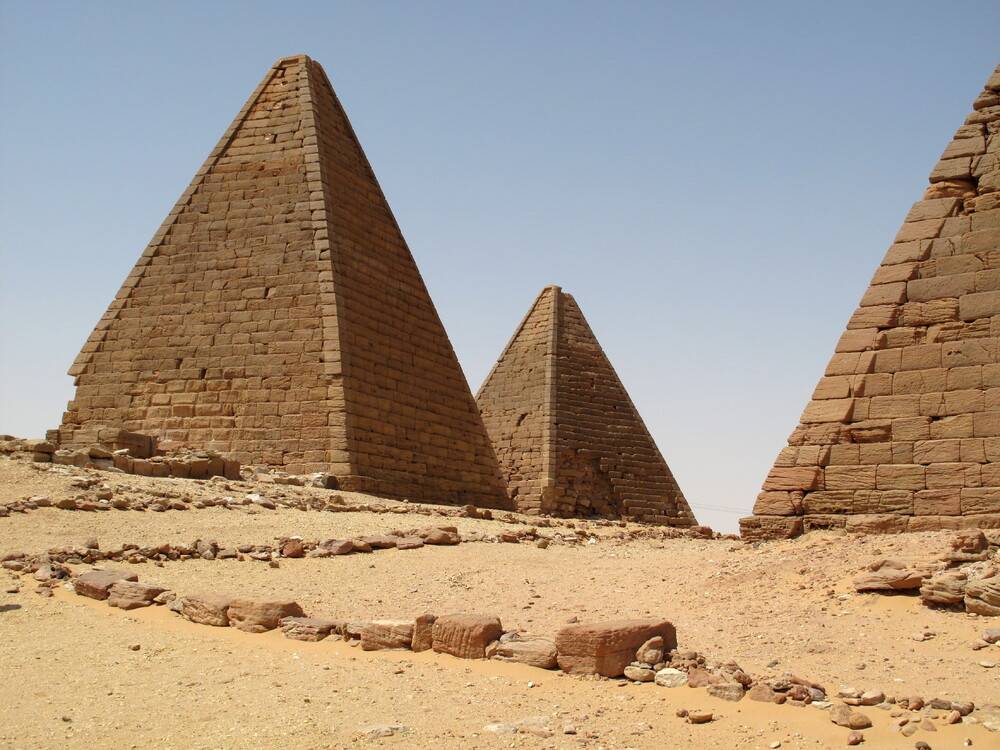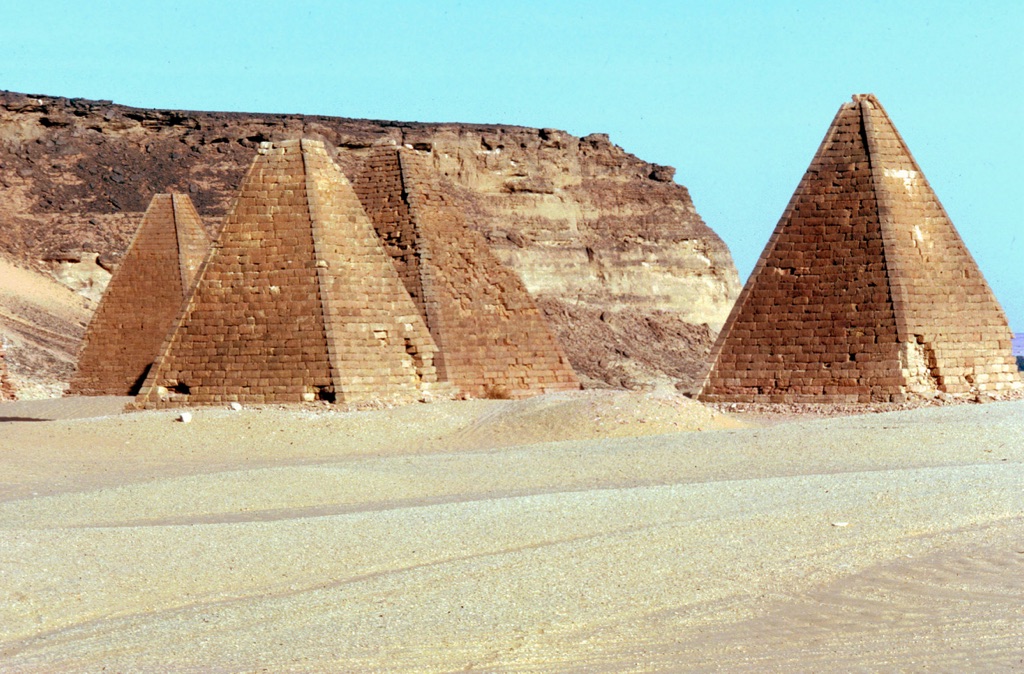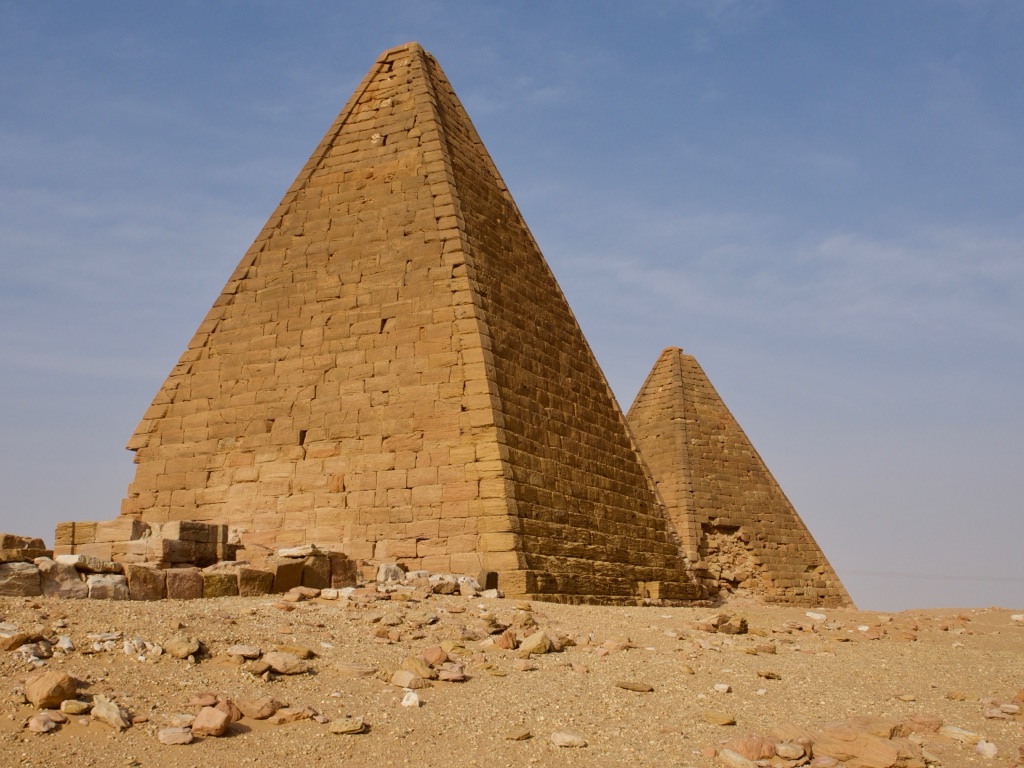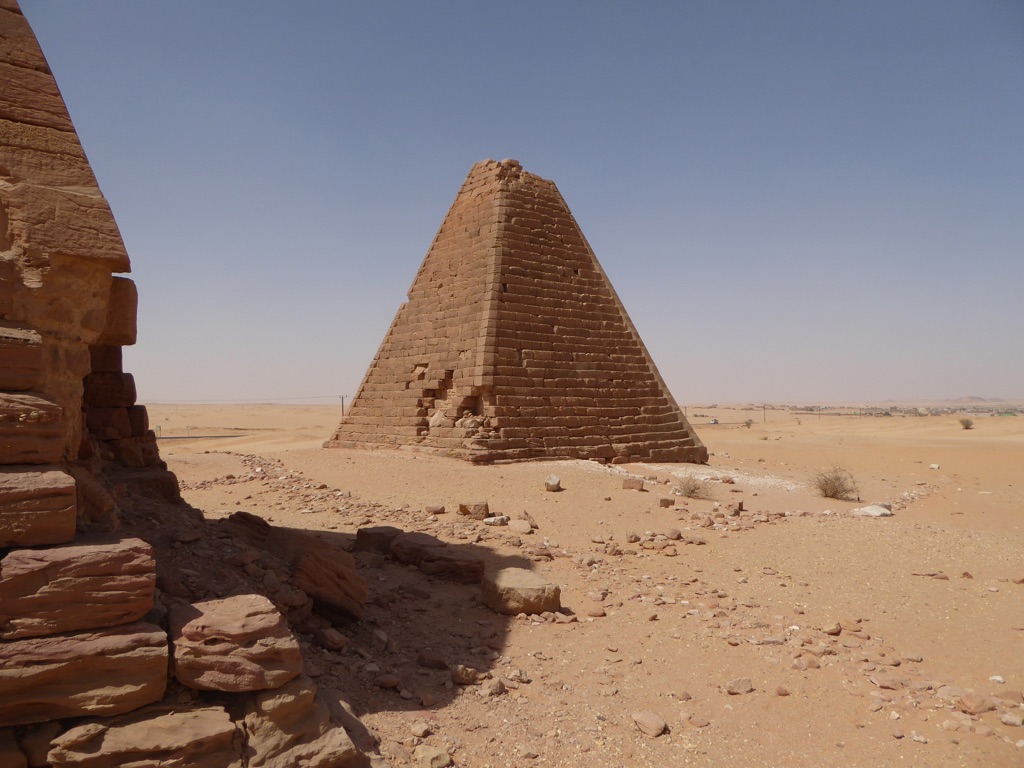The Pyramids at Jebel Barkal are a testament to the ancient kingdom of Kush’s grandeur. Nestled in modern-day Sudan, these structures stand as relics of a powerful civilization that once rivaled Egypt. The pyramids, with their steep sides and flat tops, differ from the more famous Egyptian pyramids. They mark the tombs of kings and queens, serving as a gateway to the afterlife. Jebel Barkal, meaning “Holy Mountain,” was central to the Kushite belief system and was inscribed as a UNESCO World Heritage site in 2003, highlighting its significance to human history.
Get your dose of History via Email

Historical Background of the Pyramids at Jebel Barkal
The Pyramids at Jebel Barkal or Gebel Barkal were discovered by European explorers in the 19th century. The first documented Western discovery was by the French mineralogist Frédéric Cailliaud in 1821. The Kushite kingdom, which built these pyramids, flourished from around 1070 BC to 350 AD. It was a major power in the region, controlling vast territories along the Nile River. The area of Jebel Barkal served as a royal cemetery for the Napatan kings, who revered the site as sacred.
Construction of the pyramids likely began during the reign of the 25th Dynasty in Egypt, which was of Nubian origin. The Kushites adopted many aspects of Egyptian culture, including pyramid-building. However, they developed their own distinct style over time. The pyramids at Jebel Barkal are smaller and steeper than their Egyptian counterparts. They reflect the unique Kushite interpretation of this funerary architecture.

After the fall of the Kushite kingdom, the site was largely abandoned and forgotten until its rediscovery. Over the centuries, the pyramids suffered from exposure to the elements and human interference. Some were even blown up in the 19th century by treasure hunters. Despite this, many of the pyramids still stand today, offering insights into the Kushite civilization.
The site of Jebel Barkal has also been significant in more recent history. It played a role in the Mahdist War in the late 19th century, where the Mahdi’s forces used the area as a stronghold. This conflict brought further attention to the pyramids, as European forces encountered them during their campaigns in Sudan.
Today, the Pyramids at Jebel Barkal are an important archaeological site. They attract scholars and tourists alike, eager to learn about the history of Kush. The site’s significance goes beyond its pyramids; it includes temples and palaces, offering a comprehensive look at the ancient kingdom’s culture and architecture.
About the Pyramids at Jebel Barkal
The Pyramids at Jebel Barkal are a collection of around 20 structures, built as tombs for royalty. They are made of sandstone blocks, quarried locally. The pyramids feature a distinctive Nubian style, characterized by steep angles and flat tops. This contrasts with the smooth-sided, pointed pyramids of Egypt.
The largest pyramid at the site is believed to have been built for King Taharqa, a prominent Kushite pharaoh who also ruled over Egypt. The base of this pyramid would have been approximately 52 meters on each side. Unfortunately, it has been significantly damaged over time.

Architectural highlights of the site include the remains of intricate carvings and hieroglyphics. These adorn the walls of the pyramids’ chapels and the temples at the foot of Jebel Barkal. The carvings depict various deities worshipped by the Kushites, as well as scenes from the lives of the buried royals.
The construction methods of the Kushites were similar to those of the Egyptians, but on a smaller scale. The pyramids were built by laying courses of sandstone blocks in a diminishing size. The interiors contained burial chambers, which housed the mummified remains of the kings and queens, along with their funerary goods.
Despite their smaller size, the pyramids at Jebel Barkal (Gebel Barkal) are significant for their historical value. They provide a glimpse into the funerary practices and religious beliefs of the Kushite civilization. The site’s preservation allows for ongoing research and understanding of this ancient African kingdom.
Theories and Interpretations
Several theories exist about the use and significance of the Pyramids at Jebel Barkal. Most scholars agree that they served as tombs for the Kushite elite. They were part of a larger religious and ceremonial complex centered around the holy mountain of Jebel Barkal.
Some theories suggest that the pyramids were also used for ritualistic purposes. The flat tops may have been platforms for ceremonies or offerings to the gods. The proximity of the pyramids to the temples at the base of Jebel Barkal supports this idea.
Mysteries still surround the site, particularly regarding the full extent of the pyramid complex. Excavations have revealed more structures over time, suggesting that there may be more to discover. The exact religious significance of Jebel Barkal to the Kushites is also a subject of ongoing research.
Historians have matched the pyramids to historical records by analyzing inscriptions and comparing them to other known Kushite sites. This has helped to identify some of the individuals buried within the pyramids. However, many of the tombs were looted in antiquity, complicating efforts to match them to specific rulers.
Dating of the pyramids has been carried out using various methods, including radiocarbon dating and analysis of pottery found within the tombs. These methods have helped to establish a timeline for the construction and use of the pyramids, placing them within the broader history of the Kushite kingdom.
At a glance
Country: Sudan
Civilization: Kushite Kingdom
Age: Approximately 1070 BC to 350 AD
Conclusion and Sources
Reputable sources used in creating this article include:
- UNESCO World Heritage Centre – https://whc.unesco.org/en/list/1073/
- Wikipedia – https://en.wikipedia.org/wiki/Jebel_Barkal

